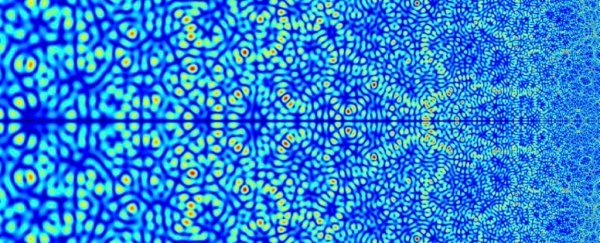Mathematicians from around the world are working together to do something that's never been done before - build a huge atlas full of all the most mind-boggling ideas at the cutting edge of mathematics and science.
The ongoing project is now freely available online with a simple user interface, so anyone who wants to can jump in, explore, and be inspired by the latest mathematical objects and the weird and wonderful connections between them. So, where do we sign up?
Known as the 'L-functions and Modular Forms Database', or LMFDB for short, the database has been created by 80 mathematicians from 12 countries, and it'll be the first time anyone has curated all these ideas from across the branches of mathematics, physics, and computer science.
"Our project is akin to the first periodic table of the elements," said one of the project members, John Voight, from Dartmouth College in New Hampshire. "We have found enough of the building blocks that we can see the overall structure and begin to glimpse the underlying relationships."
While we're now all incredibly familiar with the periodic table of elements, it wasn't until scientists began putting it together in the 1860s that the relationships between different chemical elements really became clear, and our understanding of how the world worked took off. The hope is that creating something similar for mathematics will have the same effect.
Those relationships in maths are important, because they help us understand the links between different fields of science, as well as the natural world. "Much like how the Cartesian plane connects geometry and algebra, LMFDB and its researchers aim to build connections between seemingly separate specialties," writes Futurism.
So how do you go about cataloguing something as intangible and theoretical as mathematics? The American Institute of Mathematics explains, you use something called L-functions:
"Similar to the elements in the periodic table, the fundamental objects in mathematics fall into categories. Those categories have names like L-function, elliptic curve, and modular form. The L-functions play a special role, acting like 'DNA' which characterises the other objects."
While the database is a work in progress, already more than 20 million mathematical objects have been catalogued with their L-functions.
And the more filled out that this 'periodic table' becomes, the more value scientists will be able to get out of it. One thing in particular they'll be looking for are patterns between prime numbers, as well as relationships between quantum physics and maths.
The best part of all is that the team says amateurs and experts alike should be able to easily browse the database and learn about the strange relationships in mathematics. You can head over here to do that now.
Who knows, one of us might be the next person to find a strange new relationship that'll break maths wide open.
